Are you someone who loves pothos plants? These popular houseplants are a great option for beginners but did you know there’s a ton of different variety of pothos plants?
Today we’re going to walk you through different pothos types to add to your pothos collection!
My journey with pothos plants all began with the Golden Pothos. It was my very first plant! My mom gave it to me when I was a college student with no plant experience and not a lot of great sunlight.
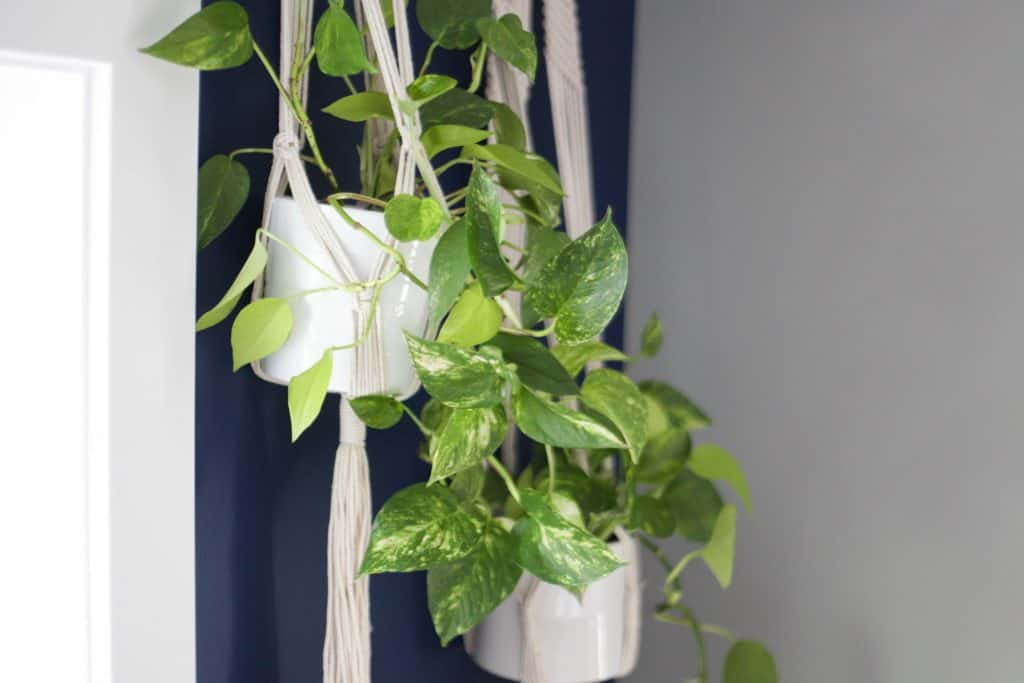
That one simple plant has produced tens if not hundreds of additional plants over the years as I propagated it for friends, who have propagated it for their friends, and so on and so on. They’re an amazing plant and great for beginners!
In this article, you will read about different pothos plant varieties, from the most famous to the rarest in the pothos families.
There’s an informative, frequently asked questions (FAQs) section at the end of this article for your assistance, so make sure to read it till the end!
Table of Contents
Pothos Plants History
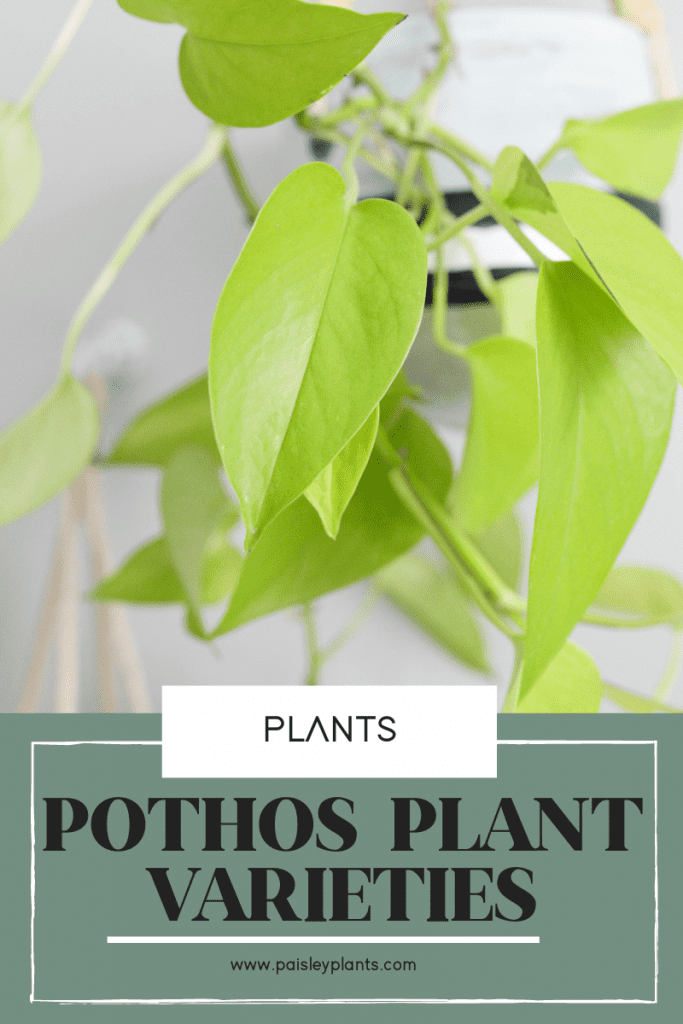
This post contains affiliate links. Thanks for supporting Paisley Plants!
Pothos plant, scientifically known as Epipremnum aureum, with its thick, waxy leaves, is an evergreen, tropical vine and flowering plant from the Araceae family. It is easily distinguishable due to its heart-shaped leaves and long-trailing stems/branches.
It is commonly known as the hanging plant. Interestingly, the plant also can climb walls/trees and reach great heights because of its aerial roots. They can reach up to the size of 66 ft (20m).
One of the most outstanding features of the pothos plant is its excellent low-light maintenance. Most plants lose their variegated leaves due to low light but not pothos, and this feature makes it a great candidate to be kept indoors.
The Pothos is native to Moorea in the Society Islands of French Polynesia. It is known as the devil’s ivy, money plant, and golden pothos.
It got the common name of devil’s ivy because it is pretty much impossible to kill, and it stays green even in the absence of light.
9 Pothos Plant Varieties
Every pothos plant is unique, but which one is for you? Let’s explore in the article.
1. Marble Queen Pothos (Epipremnum aureum ‘Marble Queen’)

Find this Marble Queen on Etsy!
Epipremnum aureum cultivar, “The Marble Queen,” with its heart-shaped leaves and cream particolored, makes it one the most common indoor hanging plants. The foliage size is pretty much the same as golden pothos.
Marble Queen has a slow growth rate, and so it requires less frequent pruning and repotting. This fact makes it easier to take care of and low-maintenance.
2. Neon Pothos (Epipremnum ‘Neon’)
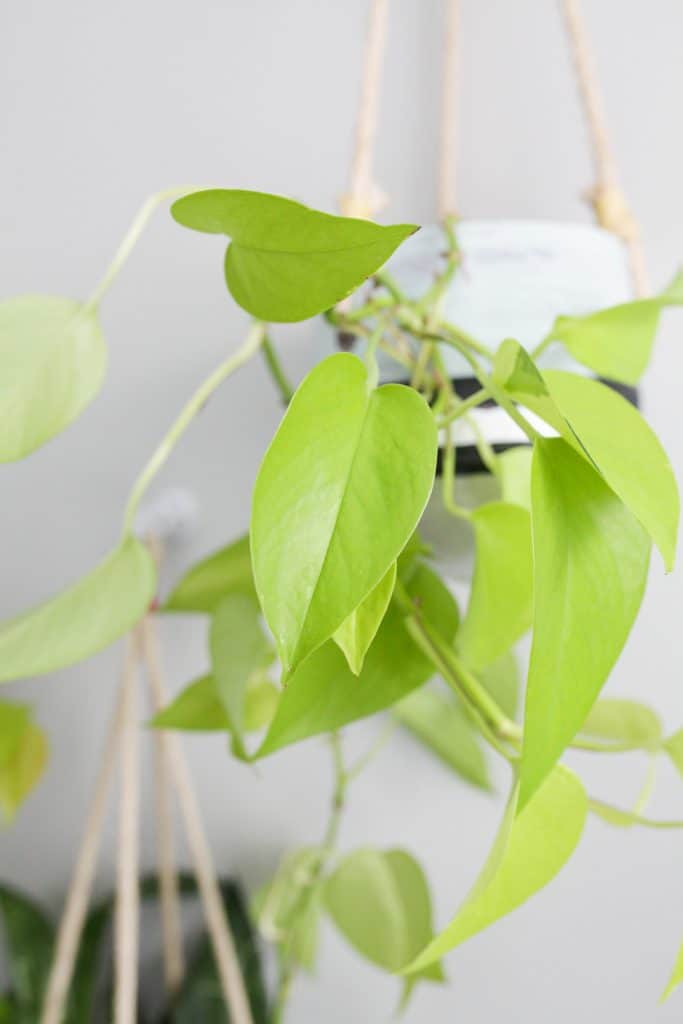
Neon pothos has an electrifying green coloration as much as that they appear to emit a faint glow, which perks up rooms. It is one of the reasons why it is a favorite choice amongst buyers.
Interestingly, the leaves tend to deepen in color on maturation.
It needs a sunny location, but the light should be filtered, making it a little high maintenance. You should water the plant sparingly for the best results.
Pro tip: do not water it unless about an inch of topsoil has dried.
*Find Neon Pothos care tips here.
3. Jessenia Pothos (Epipremnum ‘Jessenia’)
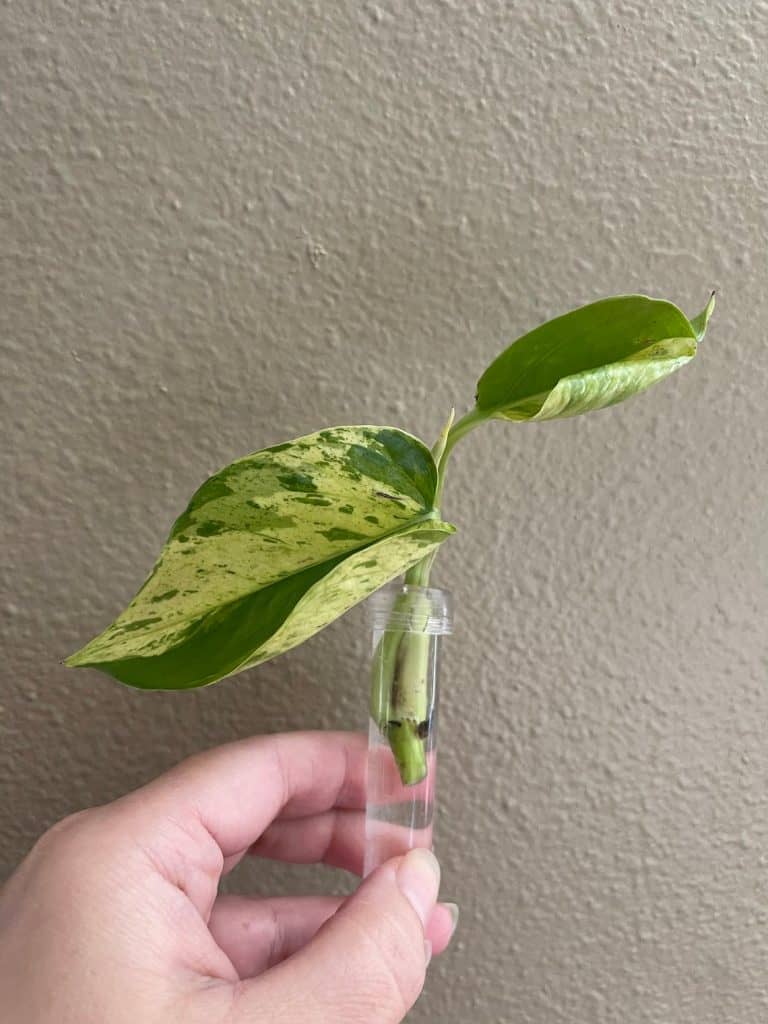
Find this Jessenia Pothos on Etsy!
You don’t have to worry about repotting Jessenia Pothos anytime soon, too, because it is a slow grower. Jessenia has lighter quirky green leaves, which are heavily variegated.
Some tend to adopt the marble effect, while the other plants have random traces of pure golden yellow.
It is a relatively new pothos, but one of the most valued because it’s rare and challenging to find. People especially admired the plant due to its distinct coloration patterns, but it does require a lot of sunlight to produce the most attractive variations on the downside.
4. Manjula Pothos (Epipremnum ‘HANSOTI14’)
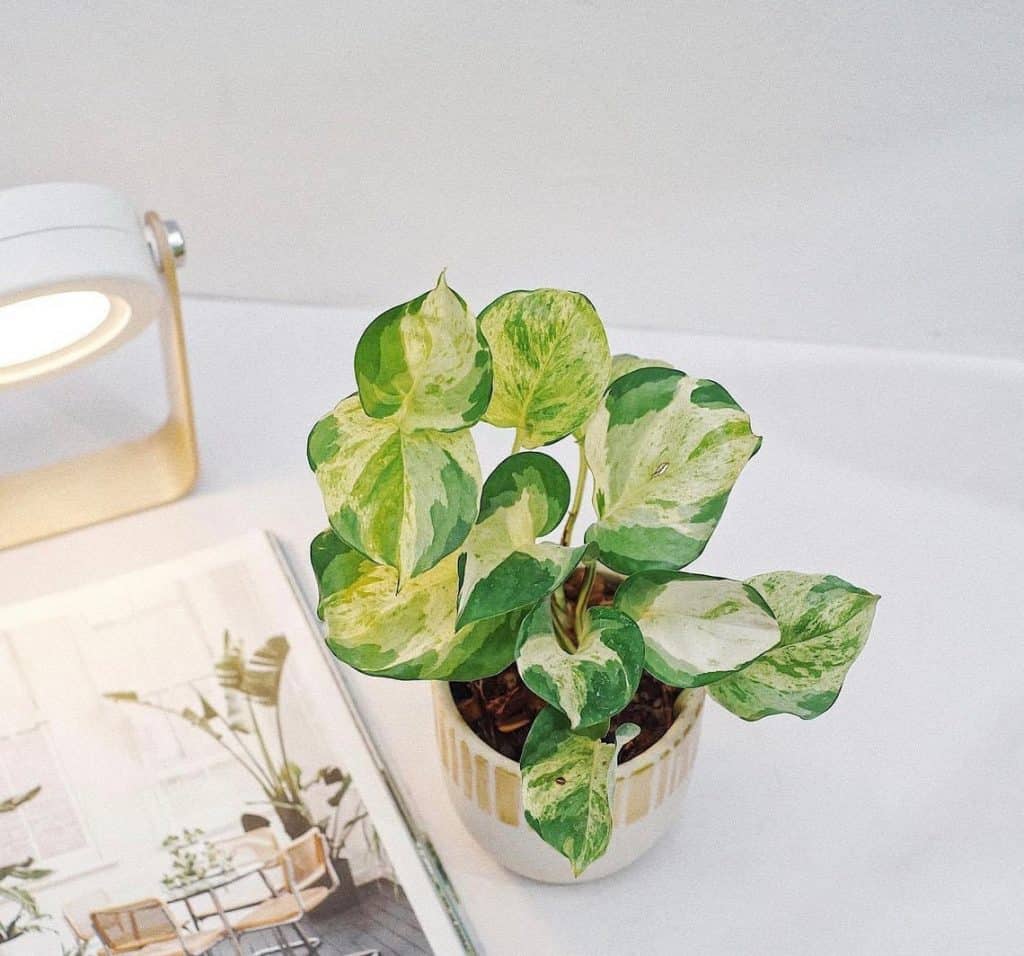
Find this Manjula Pothos on Etsy!
Manjula Pothos, also known as the ‘happy leaf,’ has dark green leaves and is heart-shaped congruent with its Pothos family. Don’t just lose interest yet because its leaves are uniquely wavy with very strong variegation in shades of light green, silver, cream, and white.
Its unique selling point (USP) is that some of the leaves are entirely pure white.
You might have guessed it already, but yes, it is rare and challenging to find alongside the requirement of high maintenance. It needs a lot of sunlight (not direct) to maintain its distinctive variegation. If kept in low light for long, Manjula loses its variegation.
Comparison with Parental Cultivar (Marble Pothos)
It differs from plants of the parent, the cultivar ‘Marble Queen’, in the following characteristics:
- Has leaves that are much smaller than the leaves of the parent plant.
- Has leaves that are different in shape compared to leaves of the parent plant.
- Has leaves that are not smooth compared to the leaves of the parent plant.
5. Hawaiian Pothos (Epipremnum aureum ‘Hawaiian’)
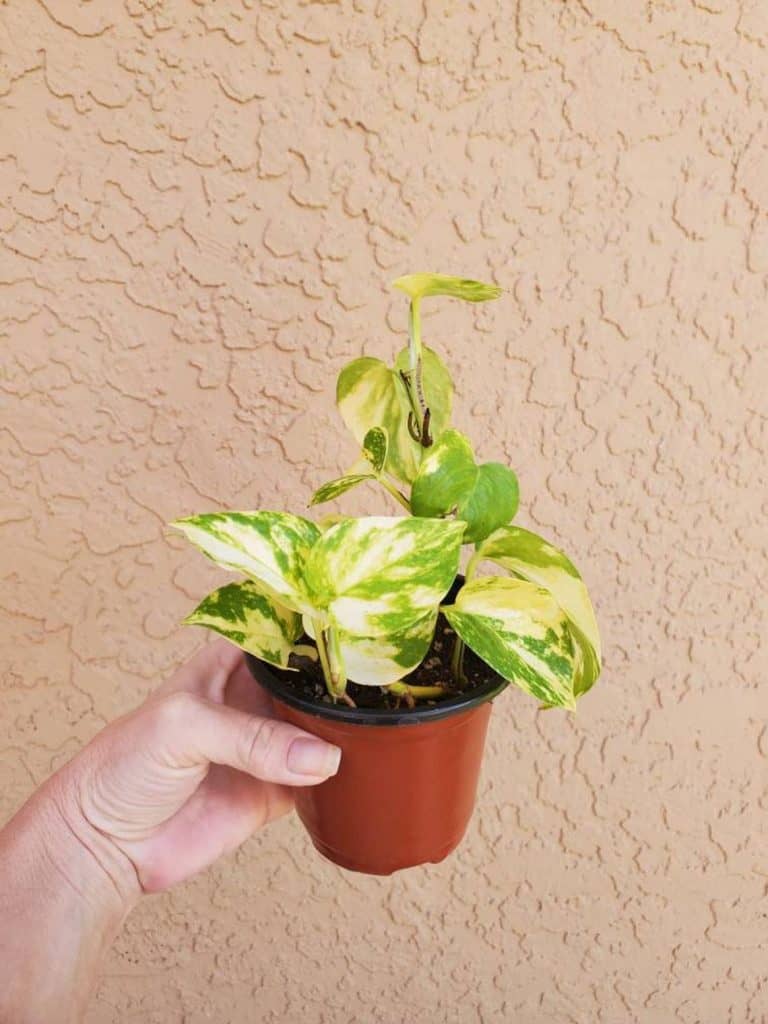
Find the Hawaiian Pothos on Etsy!
Hawaiian Pothos is a fast and heavy grower that might require frequent pruning trips, but it is a beauty with its vast leaves and dark green foliage showered with yellow coloration. Its can grow up a moss pole, decorating walls/terraces with its longer vines.
Hawaiian does not require a lot of taking care as it is resilient to diseases. The larger leaves facilitate purifying air. Who does not like breathing fresh air?
6. Pearls and Jade Pothos (Epipremnum ‘UFM12’)
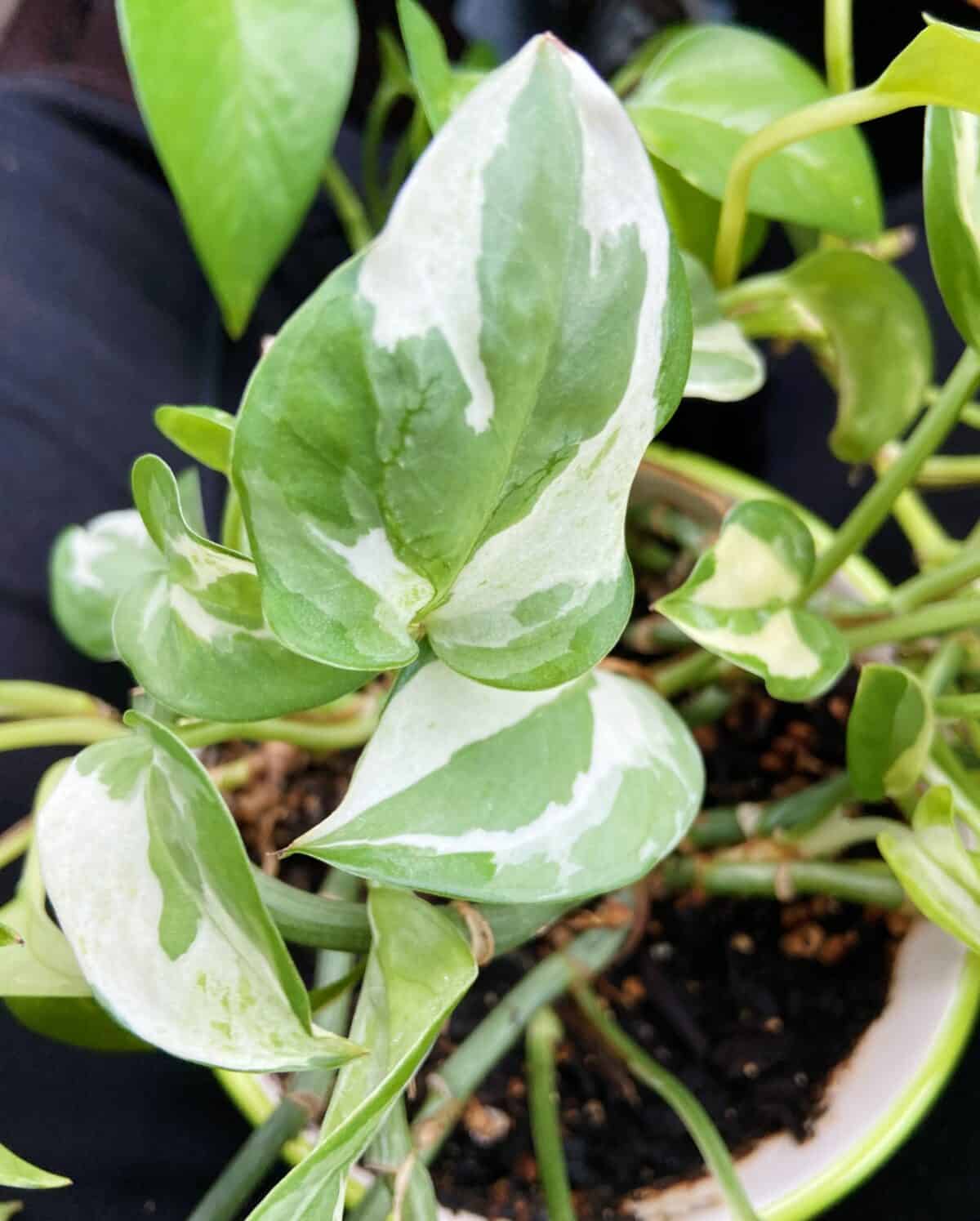
The Pearls and Jade Pothos is better known as ‘N’joy,’ was produced and patented by the University of Florida. It is a dense emerald green plant with variegation of white, grey, and cream markings.
The leaves’ center is always dark green, and it is usually the edges that are multi-colored. Its landmark feature is the small leaves, which are noticeably smaller as compared to other pothos plants.
The plant has a prolonged growth rate, and the stems cascade down any high surfaces, making it a suitable candidate for tabletops, office desks, and apartments. Besides, it adds a relaxed appeal to the environment you put it in.
But beware not to let the soil go dry because it is quick to wilt, unlike other pothos plants, which are drought resistant. To be on the safe side, you should always keep the soil moist.
7. Silver Pothos (aka Satin Pothos) (Scindapsus pictus)
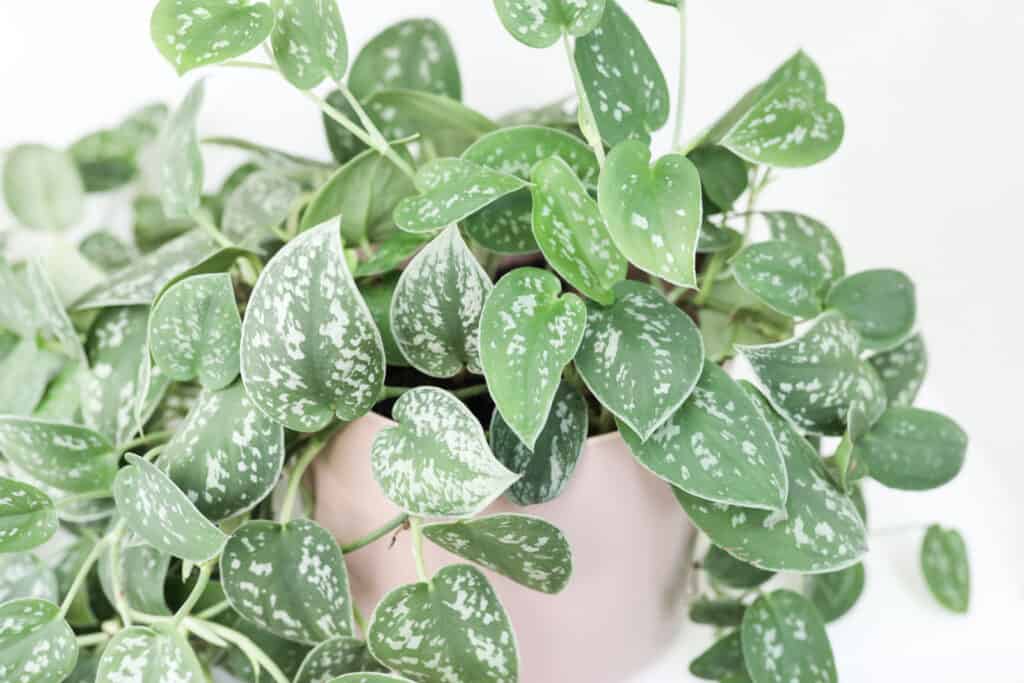
Find the Silver Pothos on Etsy!
Silver Pothos, known as Scindapsus Pictus in the scientific world, is a plant with dark green foliage and silvery edges. A few silvery spots may also appear on the foliage to add to its appeal. At the same time, the small heart-shaped leaves have their charm.
Satin Pothos need a lot of indirect bright light to produce and maintain the best variegation and color. But they are pretty flexible pothos as they can grow in low-light settings just fine.

Also, they are easy to propagate. The cutting can live in the water for long times if the water is changed every two days.
Find all my Silver Pothos care tips and tricks on this post.
8. Cebu Blue Pothos (Epipremnum pinnatum ‘Cebu Blue’)
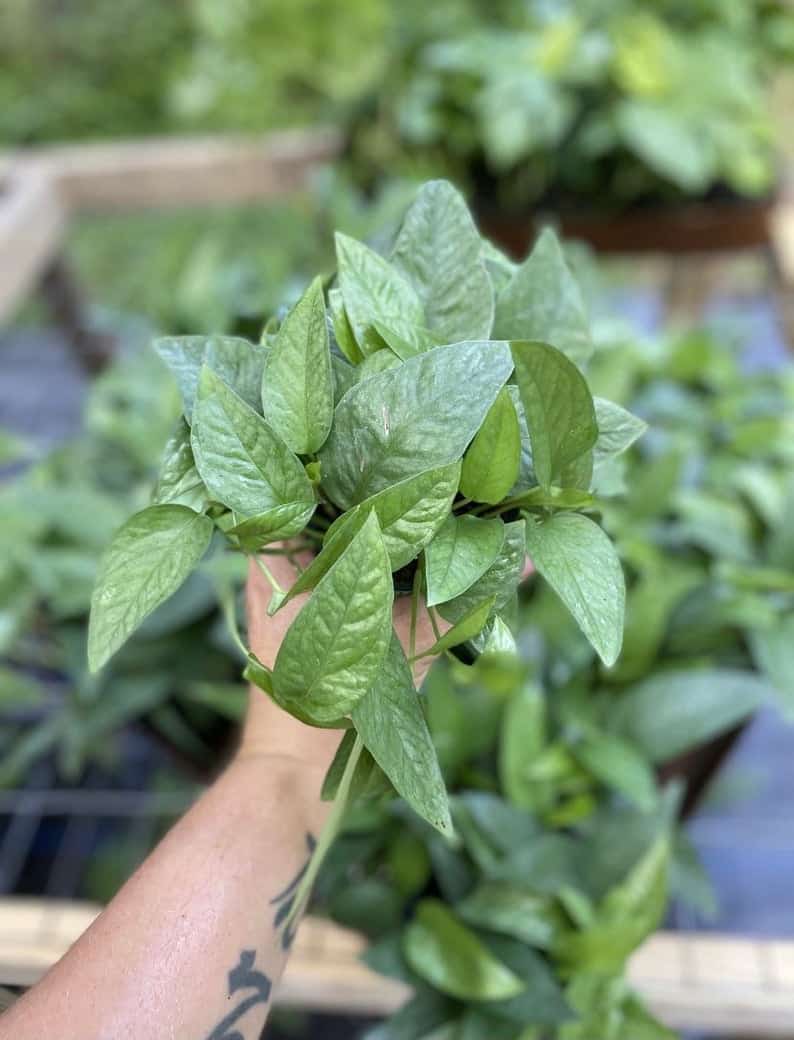
Find this Cebu Blue Pothos on Etsy!
Cebu blue pothos is a wild variant as the leaves deviate from the standard heart shape. The leaves are not even heart-shaped. The leaves, apart from being greenish-blue, are lanceolate shaped with distinct veins patterns on each plate.
The plant also develops a metallic sheen as it matures. With plenty of water, the soil should be kept moist. You should always keep the plant in bright indirect light for the best results.
Handle with Care! Cebu Blue is incredibly delicate compared to other Pothos plants.
*Find Cebu Blue pothos care tips here.
9. Golden Pothos (Epipremnum aureum)
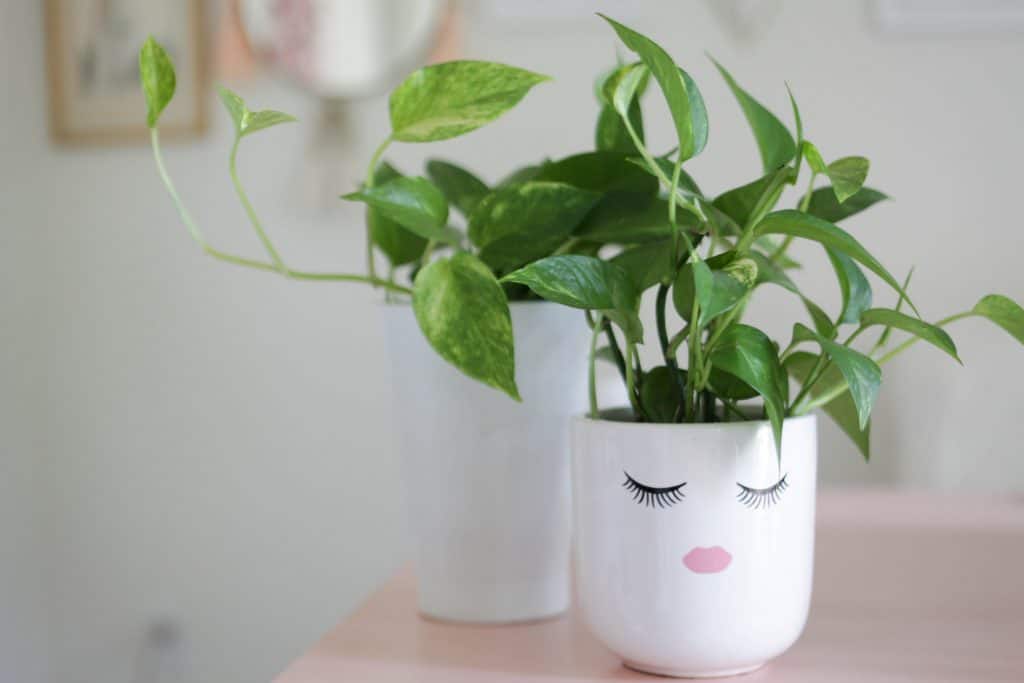
One of the most common pothos you will find is the Golden Pothos. The unique thing about the Golden Pothos is that it has beautiful variegated leaves that won’t lose their vibrancy even in low light (like most variegated leaves do).
It lives well in low light conditions and will brighten up any room.
10. Snow Queen Pothos
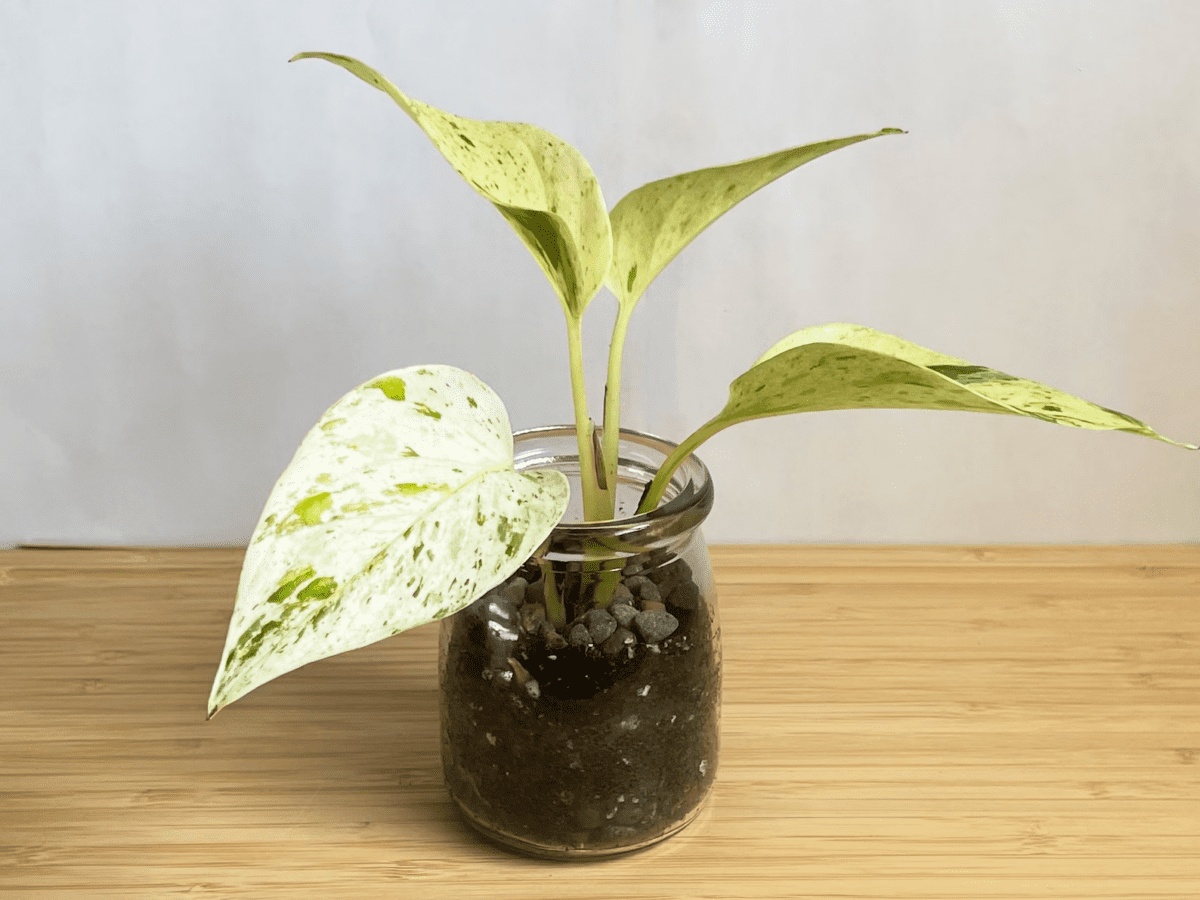
The Snow Queen Pothos is a stunning variety with green and white variegation on the leaves. This plant looks similar to the Marble Queen pothos with the main distinguishing feature is the Snow Queen has much more variegation and white than the Marble Queen.
This is another variety that needs bright, indirect light to keep its variegation. This plant needs regular watering but is drought resistant like most of the pothos varieties. If you can give it a warm, humid environment it will thrive!
11. Global Green Pothos (Epipremnum aureum ‘Global Green’)
This is one of the newest pothos varieties on this list since it was just patened in 2021 by Japanese breeder Hiroaki Asaoka. While it is very difficult to find now, it will likely become much easier to find online and at local garden centers in the coming years.
The thing that sets it apart from other pothos varieties is it’s crumpled look. The leaves have light green and dark green variegation like the Jessenia. You’ll every once in awhile see silver or white variegation on these leaves.
It’s a fast growing plant and not fussy about it’s care (can survive in low light environments) like the golden pothos.
General Pothos Care Tips
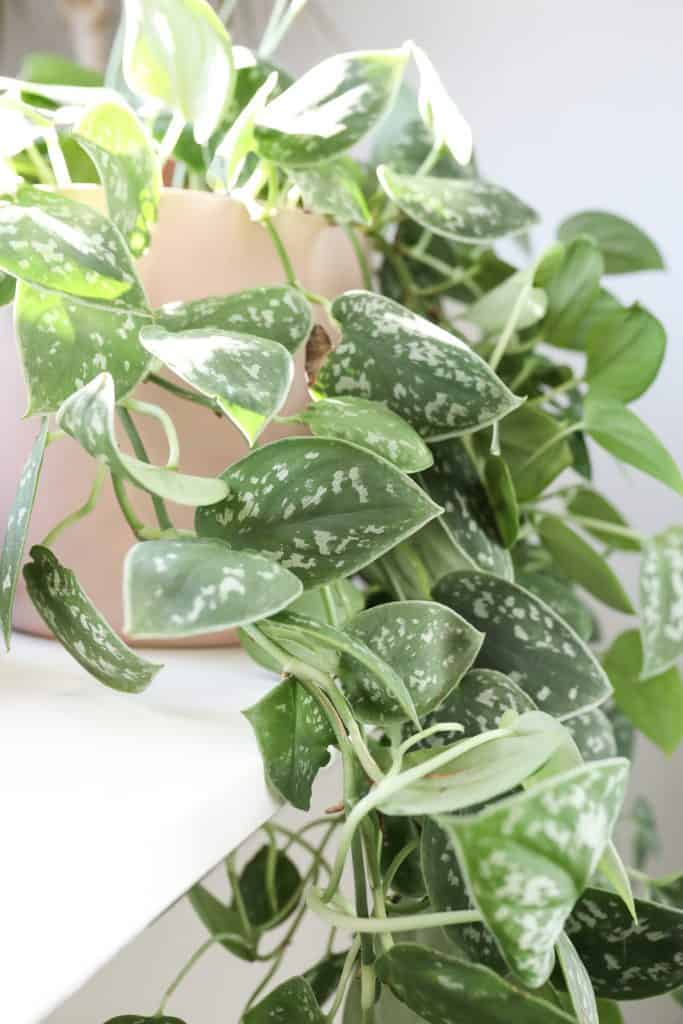
By now, you must have decided and would be dreaming about which pothos beauty to add to your room. But since most are slow growers, they are generally easy to look after.
As you may have realized, each of these different type of pothos plants need slightly different care. Be sure to check out each plant specific care tips below each plant types.
Here’s some general tips for many pothos varieties.
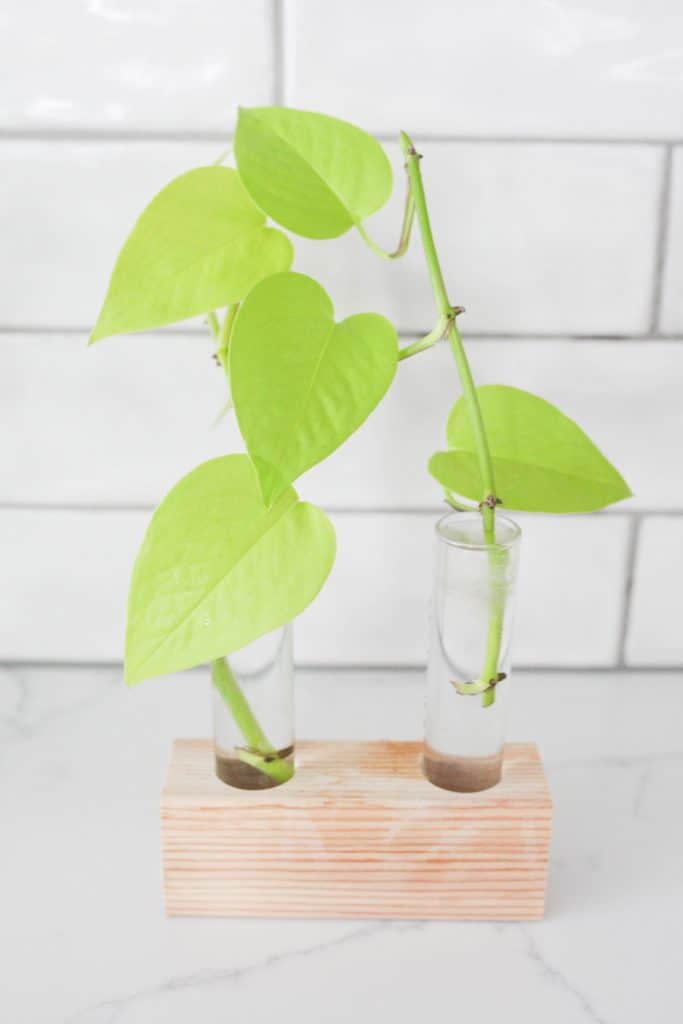
Water
The Pothos species do not need a lot of water because most of them are drought resistant. Water your plant when you feel the top 1 inch of the soil has dried. You can do this by pressing your finger on the earth. If your finger gets wet, let it be for now.
The pothos plants do well with the soak-and-dry watering schedule.
Light
Lighter-colored Pothos plants thrive in stronger indirect sunlight; they grow faster, and the variegation is also kept vibrant. In comparison, darker leaf pothos plants grow better in low to minimal light conditions.
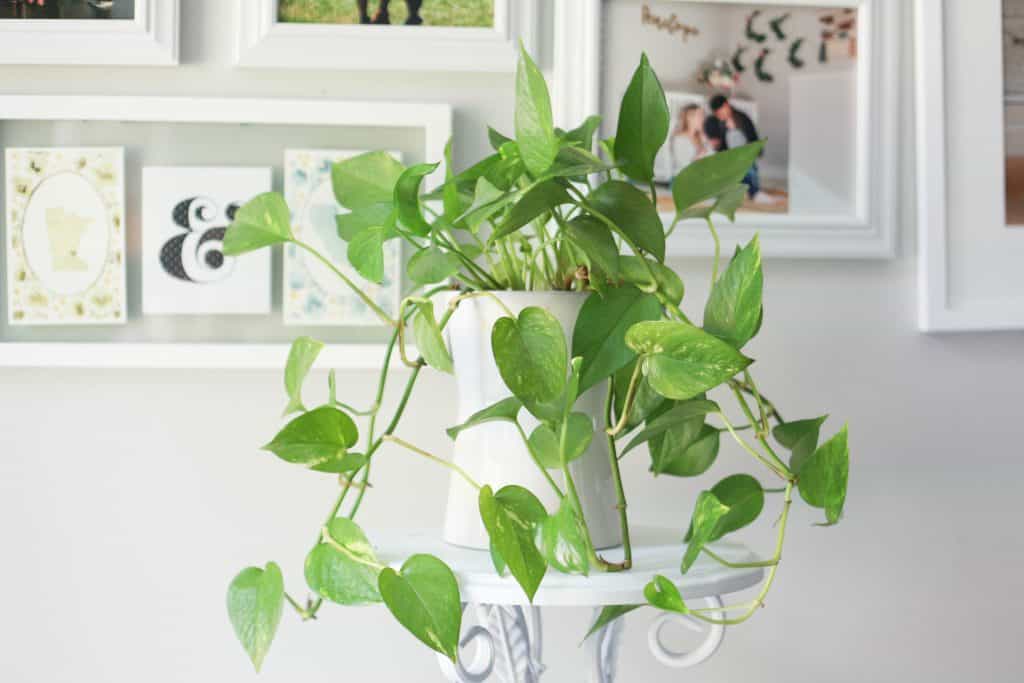
However, be sure not to put your pothos plants in direct sunlight as it would be detrimental to the plant.
Soil
Most types of pothos plants, like most plants, need water but not excess water. Thus, the soil should retain moisture for some time but not excessively because that will cause the plant’s roots to rot.
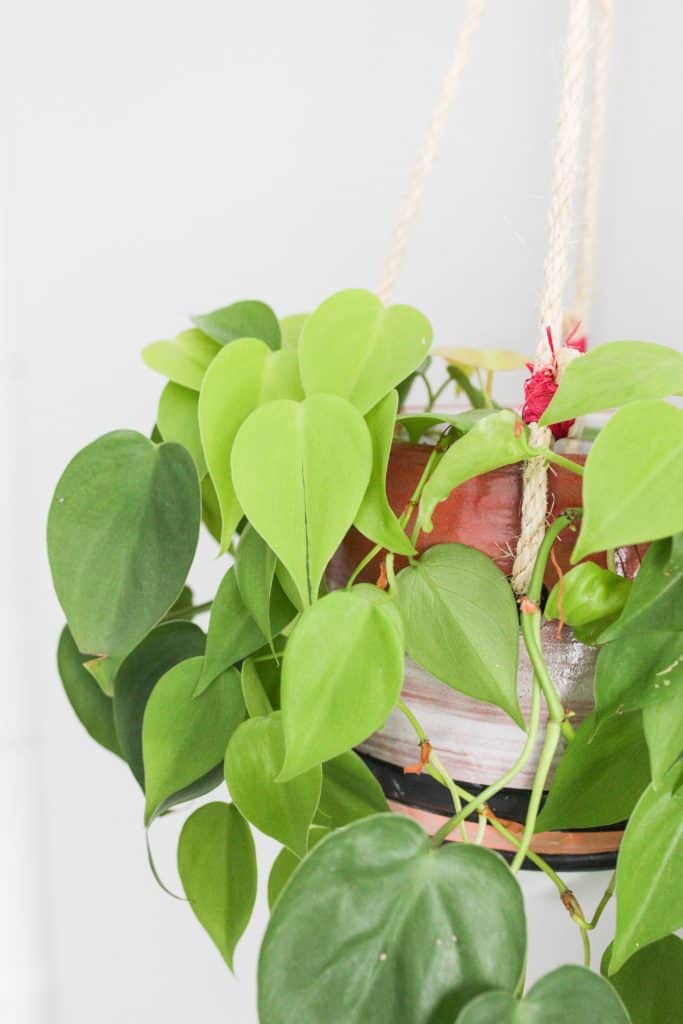
For this, the best type of potting medium should equally contain the following: potting soil, peat moss, and perlite.
FAQs About Varieties of Pothos Plants
Jessenia Pothos species are the least found. Their scarcity is what makes them extremely popular among plant lovers. Don’t be surprised if you have to pay a fortune for this plant because it is one of the rarest species among plants.
All Pothos plant varieties are easily identifiable due to their heart-shaped leaves, which are thick, large, and waxy. Another benchmark feature is its elongated stem, which usually hangs from hanging baskets or cascades down tabletops.
It isn’t easy to differentiate between the two, but pothos has more extensive, thicker, and waxier leaves with distinct variegations. In comparison, philodendrons are softer and thinner. Pothos grow faster than Philodendrons and also require much more light.
Everyone has their poisons but if you are fascinated by amazing variegations, then go for pothos.
Pothos is called devil’s ivy because it’s near impossible to kill and stays green even in low light environments.
Where to Buy:
Glad to find you at the end of this beginner’s guide on choosing your first pothos plant. Now you know about the different pothos plant varieties, their distinctive features, and how to take care of them.
Remember, even though they’re low maintenance, you have to be a certain degree careful when you’re dealing with pothos plants. If there’s anything more you’d like to know, mention it in the comments below. Happy gardening!

